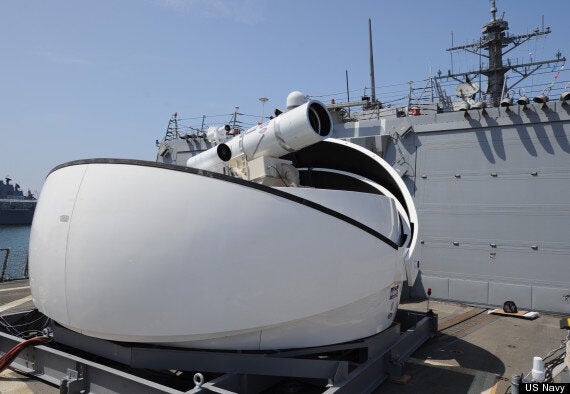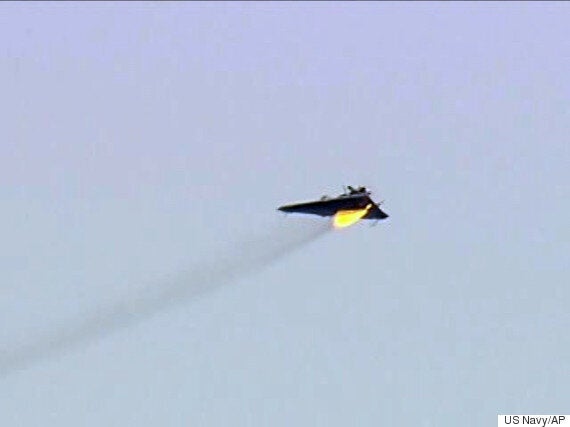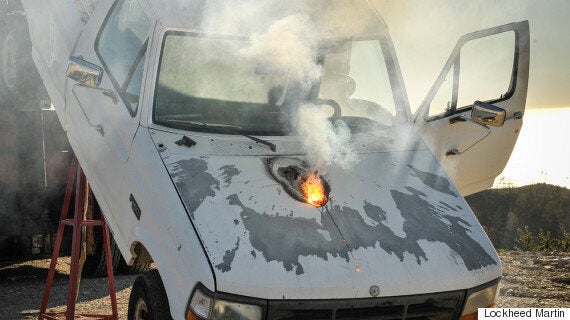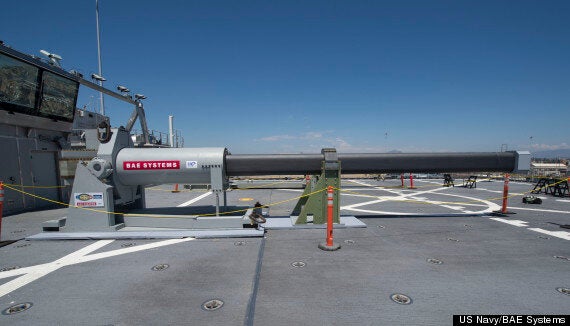Laser guns are no longer the realms of Star Trek and Star Wars. Instead as the technology has become cheaper and more affordable governments have realised they might just be the legitimate future of warfare.

The shipboard laser system was designed to destroy drones and small attack boats.
Leading that charge is the US which, according to the Telegraph, will be planning to roll out large-scale laser weapons with the US Army as soon as 2023.
According to Mary J. Miller, deputy assistant secretary of the Army for Research and Technology, the Army was well into the testing phase with both defensive and offensive weapons and was now working to 'build the trust' with the soldiers that'll be operating the weapons.
SEE ALSO:
Laser weapons are actually already deployed in several parts of the US military. The US Navy has an experimental defensive laser weapon on board one of its ships.

A remote-controlled target aircraft as it is hit by the Laser Weapon System.
One of the key advantages of directed energy weapons over conventional missiles is that they're astronomically cheap to run. For example, the Navy's laser system costs just $1 in electricity per shot.
The US Air Force and Lockheed Martin have already been testing land-based lasers which could be mounted onto a medium or large vehicle.

The ATHENA weapon is powerful enough to disable a car's engine in seconds.
Known as Advanced Test High Energy Asset (ATHENA), Lockheed Martin's 30kw weapon is being trialled as a defensive weapon for destroying road blocks, IEDs and mines.
The hope is that as the technology becomes more compact and cheaper the army will be able to miniaturise the weapons into mounted weapons on small vehicles such as Humvees.
Lasers aren't the only experimental weapon that the US is currently working on. In conjunction with UK-based BAE Systems the US Navy will soon deploy a railgun.

Railguns are electromagnetic weapons that use kinetic energy to cause damage to the target.
The railgun is a particularly terrifying brand of weapon because it forgoes the fire and smoke of current weapons in favour of cold, hard technology.
A single metal slug is propelled to mach 6 by a series of powerful electromagnets, there's no chemicals, no gunpowder.
The slug has no explosive tip either -- it doesn't need it -- instead its destructive power will come from the sheer speed and force with which it hits the target.
When finished the weapon will be able to fire a projectile with pinpoint accuracy over a staggering 110-nautical miles, far further than any current artillery weapon.